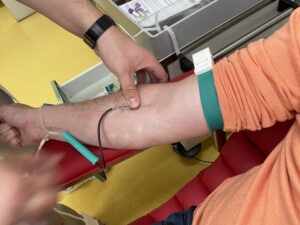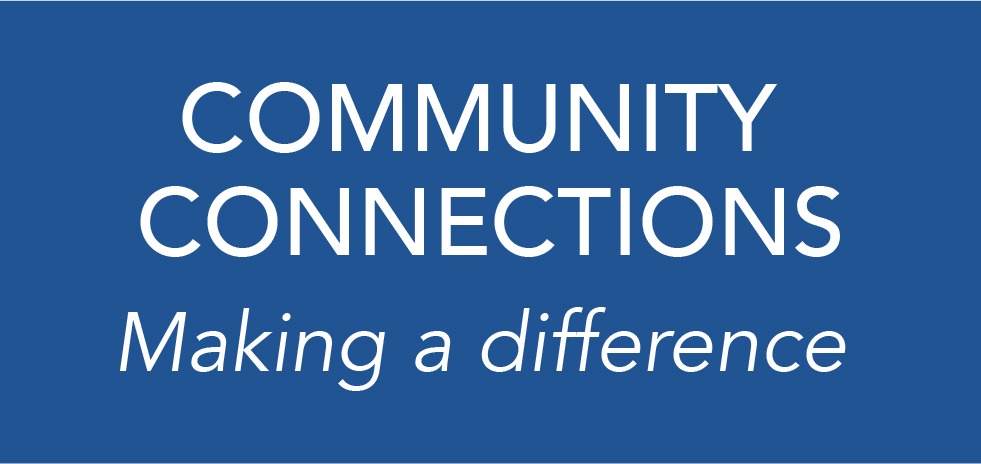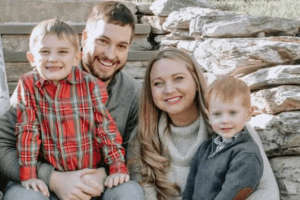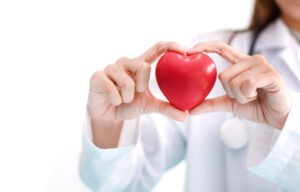
People with depression experience distinct periods — lasting at least 2 weeks of sadness, low energy, and loss of interest in things that they once enjoyed. People sometimes refer to these periods as depressive episodes.
The experience of depression can vary significantly among individuals. For example, it may cause some people to oversleep and others to sleep very little. Each type of depression can have distinct symptoms and effects.
Suicide prevention
If you know someone at immediate risk of self-harm, suicide, or hurting another person:
- Ask the tough question: “Are you considering suicide?”
- Listen to the person without judgment.
- Call 911 or the local emergency number, or text TALK to 741741 to communicate with a trained crisis counselor.
- Stay with the person until professional help arrives.
- Try to remove any weapons, medications, or other potentially harmful objects.
If you or someone you know is having thoughts of suicide, a prevention hotline can help. The 988 Suicide and Crisis Lifeline is available 24 hours a day at 988. During a crisis, people who are hard of hearing can use their preferred relay service or dial 711 then 988.
Major depressive disorder
Major depressive disorder is the classic form of depression. People with major depression experience symptoms that may include:
- sadness
- feelings of guilt, worthlessness, and hopelessness
- difficulty sleeping
- changes in appetite
- fatigue
- irritability
- feeling “empty”
- thoughts of suicide
Depression can also cause physical symptoms, such as aches and pains. It can affect thoughts and concentration and lead to difficulties in making decisions and remembering things.
According to the National Institute of Mental Health (NIMH), approximately 17.3 million adults in the U.S. experienced at least one episode of major depression in 2017. This number equates to 7.1% of all U.S. adults.
Major depressive disorder appears to be more common among women and those between the ages of 18 and 25 years.
Persistent depressive disorder
People with persistent depressive disorder have symptoms of depression that last for 2 years or more. Other names for this condition include dysthymia and dysthymic disorder. The severity of the low mood is not as intense as with major depression or other types of depression, but it tends to last longer.
Even though people with persistent depressive disorder can function in their daily lives, they may feel as though they rarely or never experience joy.
As with major depression, persistent depressive disorder can affect sleep, appetite, energy levels, and self-esteem. The NIMH estimate that 1.3% of U.S. adults experience persistent depressive disorder at some point during their lives. It also appears to be almost twice as common in women as in men.
Postpartum and perinatal depression
Postpartum depression refers to depression that develops within the first year of giving birth. It differs from the “baby blues,” which is a phenomenon that affects up to 80% of mothers after giving birth.
People with the baby blues experience relatively mild anxiety, fatigue, and sadness that typically persist for a few days before going away without treatment. Postpartum depression, on the other hand, causes more extreme symptoms of depression. Postpartum depression affects almost 15% of births, with symptoms most commonly appearing within 1 week to 1 month of the delivery. Treatment is usually necessary for those with postpartum depression.
People can also experience depression throughout pregnancy. Doctors use the revised term perinatal depression to describe depression that occurs both during pregnancy and after the birth of the baby.
Major depressive disorder with psychotic features
Psychotic depression occurs when an individual has severe depression alongside psychosis. The revisions to the Diagnostic and Statistical Manual of Mental Disorders (DSM-5) have changed the name of this condition to “major depressive disorder” with the specifier “with psychotic features.”
People with psychosis may have false beliefs (delusions) or hear or see things that are not happening (hallucinations).
The symptoms of psychotic depression usually have a “theme,” such as delusions of guilt, illness, or poverty.
The findings of a 2018 study suggest that the lifetime prevalence of psychotic depression ranges from 0.35–1%, with higher rates in older adults.
Major depressive disorder with seasonal pattern
Previously known as seasonal affective disorder (SAD), major depressive disorder with seasonal pattern is a type of depression that occurs in the winter months. It is more common in areas that are farther away from the equator. SAD causes symptoms similar to those of other forms of depression, including anxiety, fatigue, and weight gain. The American Psychiatric Association report that SAD affects approximately 5% of people in the U.S.
Experts believe that SAD occurs in some people due to the lack of natural light. However, they do not know why it affects some people and not others. Symptoms typically last from early winter to spring.
A less common form of SAD, which is called summer-onset seasonal affective disorder, occurs in the spring and summer months.
Situational depression
Situational depression, or adjustment disorder, occurs in some people who experience a traumatic or life-altering event. Doctors diagnose it more often in children and adolescents.
Examples of such events include:
- divorce
- being the victim of a violent crime
- job loss
- bereavement
- chronic illness
In children, stressful events may also include a family move, the birth of a sibling, and the separation of parents. To receive a diagnosis of situational depression, the person must show symptoms of depression that a mental health professional would consider unhealthy or excessive, given the situation.
While symptoms may resolve on their own, treatment is sometimes necessary to prevent the depression from getting worse or becoming chronic.
Major depressive disorder with atypical features
Atypical depression is a form of depression in which the symptoms differ from the usual symptoms of depression. Doctors do not understand this form of depression as well as they do other types. They may diagnose it as “major depressive disorder with atypical features.”
One key feature of atypical depression is that the person’s mood temporarily lifts when something positive happens. Doctors call this “mood reactivity.”
Researchers state that a person must have two or more of the following symptoms in addition to mood reactivity to receive a diagnosis of atypical depression:
- significant weight gain
- increase in appetite
- hypersomnia, or sleeping too much
- leaden paralysis, or a feeling of heaviness in the limbs and body
- sensitivity to rejection from others that results
- insignificant social problems or issues at work
Older research indicates that atypical depression typically has a high prevalence rate, starts when a person is younger and lasts longer than other types of depression. It is more common in those with bipolar disorder and anxiety disorders.
Diagnosis
To diagnose any form of depression, a doctor will likely carry out one or more of the following: a physical examination, blood tests to check for physical conditions that may be causing symptoms, a psychiatric evaluation, which includes checking a person’s symptoms against the DSM-5
Treatment
Medication, therapy, and a combination of both are the most common treatments for most types of depression. However, some types of depression may respond well to other forms of treatment. For example, light therapy can be effective for those with SAD.
Medication
Several types of antidepressant medications are available. People vary in their response to different drugs, and there is often a period of trial and error before they find the right medication or combination of medications.
Types of antidepressants include:
- selective serotonin reuptake inhibitors (SSRIs)
- serotonin-norepinephrine reuptake inhibitors (SNRIs)
- tricyclic antidepressants
- monoamine oxidase inhibitors (MAOIs)
- atypical antidepressants
- Other medications that can be helpful include anti-anxiety drugs, antipsychotics, and mood stabilizers.
Individuals should discuss the benefits and potential risks of antidepressant use with their doctor.
Psychotherapy
Psychotherapy, or talk therapy, can be an effective treatment for depression. One form of psychotherapy that may be helpful for those with depression is cognitive behavioral therapy (CBT). Other forms may also be beneficial.
Therapy is most effective when people find the most suitable style of therapy and the right therapist for them. Psychotherapy can help people adjust to their life circumstances, challenge negative thoughts, and learn healthy ways to deal with stress.
It can also give people the awareness to identify issues that contribute to their depression and the space to set life goals.
Other treatments
In severe cases of depression, a doctor may recommend a form of brain stimulation therapy, such as electroconvulsive therapy or transcranial magnetic stimulation.
Light therapy can help people with SAD. A doctor can recommend lifestyle changes to support depression treatment. These can include:
- eating a healthful diet
- exercising regularly
- developing stress-management techniques
They may also provide people with information about local or online depression support groups.
When to see a doctor
Individuals should see a doctor if they feel depressed, particularly if a low mood persists for 2 weeks or more or if it happens regularly.
People should seek urgent help if they have thoughts of suicide or self-harm.
Anyone who thinks that they have postpartum depression should see a doctor right away, especially if their symptoms make it difficult to care for the baby or if they have thoughts of hurting themselves or the baby. A doctor can support the person to care for the baby and themselves.
Summary
Depression is a very common mental health condition. There are several types of depression, each of which has different symptoms.
Depression is treatable with medications and psychotherapy. Other treatments may also be beneficial for some people. Anyone who has concerns that they or a loved one may have depression should see a doctor. The sooner a person receives treatment, the sooner they can start to feel better.
Medically reviewed





































